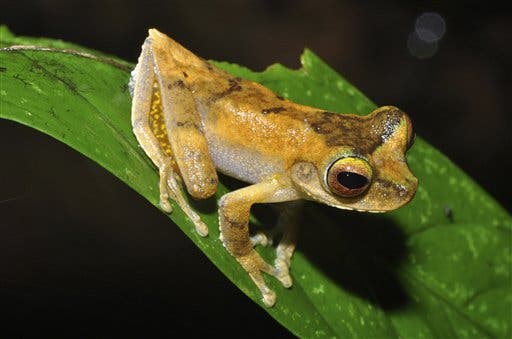
It’s always nice when new species are discovered, and this time it was an expedition from Papua New Guinea that made the discovery. A frog no bigger than a peanut, a brilliant green katydid with bright pink eyes and a white tipped tail mouse are the stars of the over 200 newly discovered species.
The findings were unveiled just a few days ago by Washington D.C.-based Conservation International and they are the result of just two expeditions in the Pacific island. Other species include 24 frog species and numerous other spiders and insects (even ants and dragonflies) that have never been described before by any human.
“They tell us how little we still know about the world,” research team leader Stephen Richards said Thursday. “There’s a lot of concern, quite rightly, about biodiversity loss and climate change and the impacts on biodiversity and what biodiversity means to us. … Then we do projects like this and we discover, ‘Hey — we don’t even know what biodiversity is out there.'”
The expedition was quite a success, even though researchers had to go through some tough moments, which included traveling by a dugout canoe and lots of trekking through remote parts of the jungle. They were extremely surprised to find there a small frog (about 2 centimeters long) that belongs to a group of frogs thought to live only in the Solomon islands.
“The discovery of any new species is significant because it helps document the biodiversity on this planet, and, more importantly, what we can lose in the future if we don’t care for our environment,” said Craig Franklin, a zoology professor at The University of Queensland in Australia who did not participate in the research.
This is a reminder of just how important field work is for biologists, and how this type of expeditions can help us understand more about the very world we live in.






